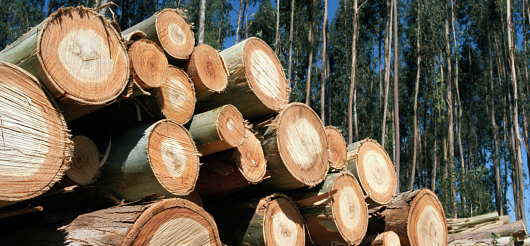What is forest certification?
Forest certification is a voluntary process whereby an independent third party (the “certifier”) assesses the quality of forest management and production against a set of requirements (“standards”) predetermined by a public or private certification organization. Forest certification, and associated labelling, is a way of informing consumers about the sustainability of the forests from which wood and other forest products were produced.
There are two types of forest certification:
- certification of forest management, which assesses whether forests are being managed according to a specified set of standards; and
- certification of the chain of custody (sometimes referred to as CoC certification), which verifies that certified material is identified or kept separate from non-certified or non-controlled material through the production process, from the forest to the final consumer. To label an end-product as certified, both forest management certification and chain-of-custody certification are required.
Most forest management certification standards address a wide range of economic, social, environmental and technical aspects of forest management, including the well-being of workers and of families living in and around the forest area subject to certification.
Why might forest managers be interested in certification?
Why might forest managers be interested in certification?
Forest managers – such as forest owners, entrepreneurs, associations and timber companies – may voluntarily decide to apply for certification. They may do so in expectation of better prices for their products, to maintain or increase access to markets for their products, to improve their public image, and to achieve social and environmental goals.
What is behind the idea?
What is behind the idea?
Forest certification is a market mechanism to promote the sustainable use and management of forests and to identify “sustainably produced” products for the consumer. The aim is to reward forest managers who pursue sustainable forest practices rather than practices with the potential to cause negative economic, social and environmental impacts. A certification label on a forest product informs potential buyers that the product was produced in a well-managed forest in accordance with a given set of standards. Consumers concerned about social and environmental issues are expected to give preference to products carrying such a label, and they may also be prepared to pay higher prices for them. Forest managers may be motivated to pursue certification for various reasons (see “benefits” below), ultimately leading to improvements in the quality of forest management and an increase in the extent of well-managed forests.
What are the benefits?
What are the benefits?
In many cases, the most immediate benefit of certification for forest managers is the streamlining of forest operations due to improvements in efficiency and greater control of production processes.
Although experience has shown that certified forest products do not always obtain higher prices compared with uncertified products, certification may be essential for maintaining access to some markets.
Certification has been shown to be a valuable tool for positioning products in the marketplace and in certain sectors: in the paper and packaging sector, for example, certification is the norm rather than the exception in many major markets. Certification can also provide confirmation that a product fulfils legal requirements – such as those established by laws aimed at preventing the trade of illegal timber products – and may help producers and traders in fulfilling administrative obligations. Forest certification may help bring about improvements in the working conditions and safety and health of forest workers, lead to improved forest conservation outcomes, and encourage sustainable forest use. Forest certification can help boost the public image of companies – both those that pursue certification in their own forest operations, and those that purchase only certified products.
What are the costs?
What are the costs?
Forest managers incur both direct and indirect costs in pursuing certification. Direct costs include those associated with the certification process – such as the fees paid to certifiers to conduct initial assessments and subsequent audits, hold stakeholder consultations and prepare reports. Achieving certification may also require investments in machinery, staff training, infrastructure and logistics to improve forest management in compliance with the certification standards; these indirect costs could be much higher than direct costs, depending on the gap between the existing quality of management and that required to meet the certification standards. Because the direct costs of certification are relatively fixed, they usually decrease per unit of wood production or forest area – in other words, they decline, in relative terms, the larger the forest operation. Indirect costs, on the other hand, increase as operations increase in size because of the need to improve practices across larger areas.
How is certification achieved?
How is certification achieved?
Achieving forest certification can be either a quick or a lengthy process, depending on the pre-certification quality of forest management, administration and documentation systems, and on the capacity of the applicant to make the required adjustments. Basic certification requirements include:
- compliance with the law;
- well-written and coherent forest management plans;
- the implementation and monitoring of operations to reduce forest damage;
- adequate working conditions; and
- good relations with people living in and around the forest subject to the certification process.
The certification process requires that applicants take a number of steps to demonstrate full compliance with the standards. A certificate valid for a specified number of years is issued when compliance has been achieved.




